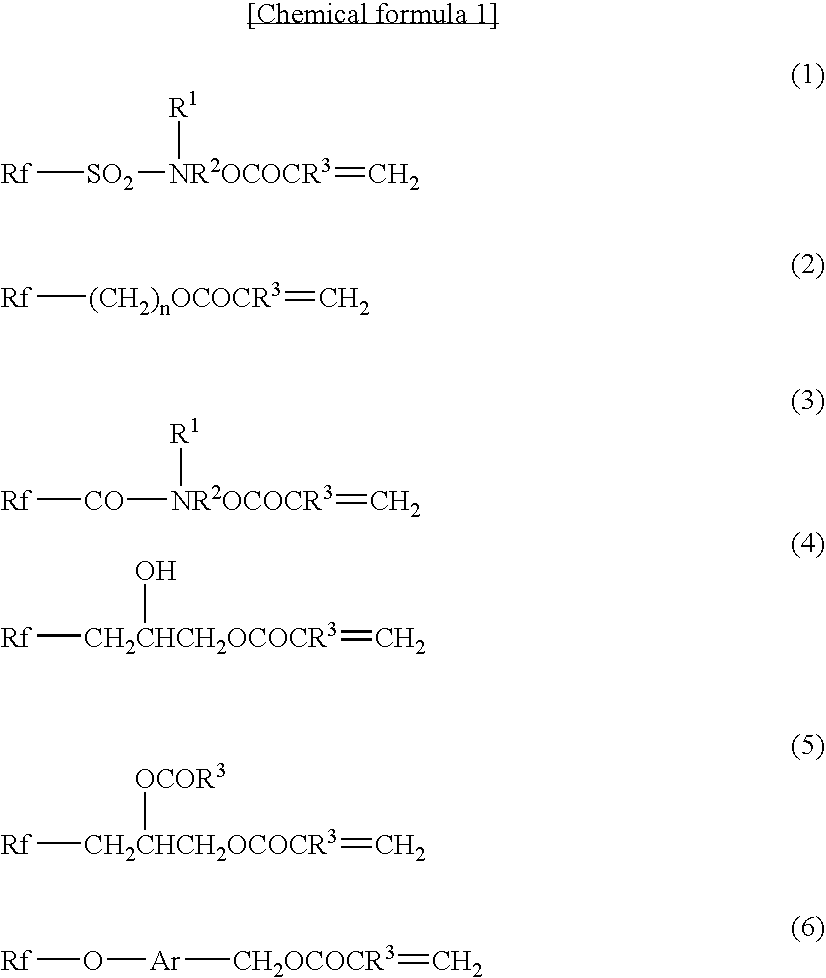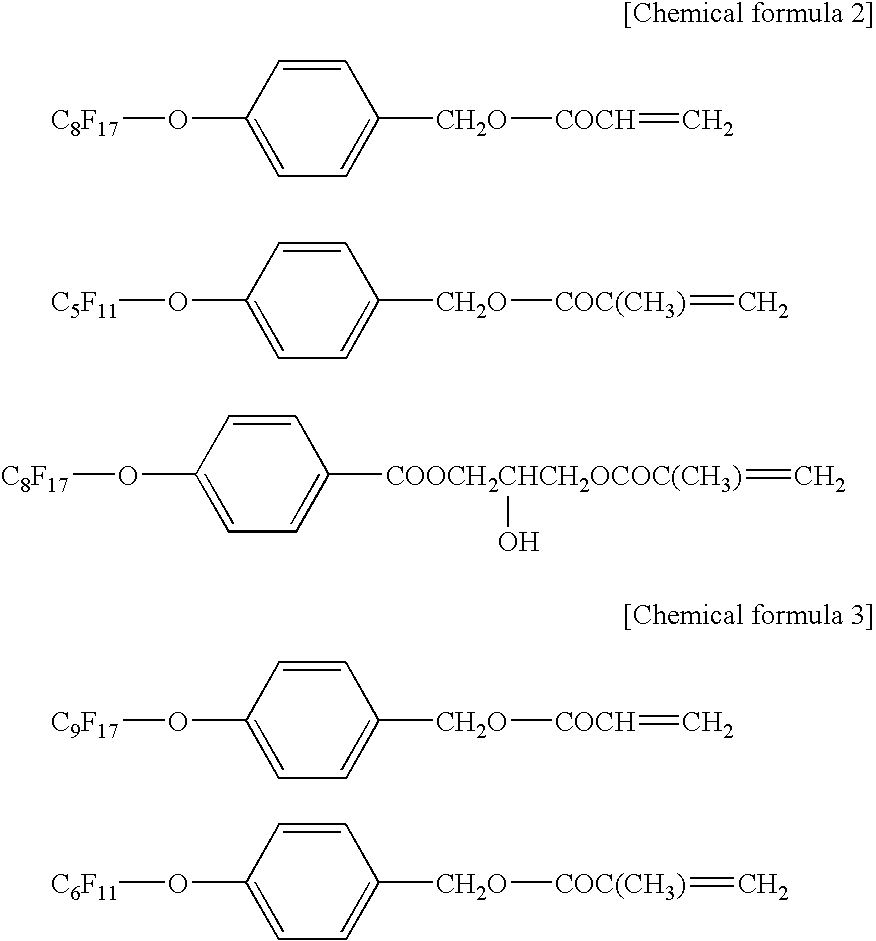Aqueous liquid dispersion of water and oil repellent agent containing nonionic surfactant
a technology of water and oil repellent agent and water liquid, which is applied in the direction of liquid repellent fibres, other chemical processes, coatings, etc., can solve the problems of poor storage stability and dilution use stability, rapid worsening of properties, troublously making stains of processed fabrics, etc., and achieve excellent stability, high water and oil repellency, excellent stability
- Summary
- Abstract
- Description
- Claims
- Application Information
AI Technical Summary
Benefits of technology
Problems solved by technology
Method used
Image
Examples
examples
[0040] Examples and Comparative Examples are shown hereinafter to illustrate the present invention in detail.
[0041] Evaluations are conducted in Examples and Comparative Examples as follows:
Storage Stability
[0042] The average particle diameter (scattering intensity) of an aqueous dispersion (solid content: 30% by weight) is measured at the initial and after the storage at 25° C. for one month by FPAR-1000 manufactured by Otsuka Electronics Co., Ltd. and the storage stability is evaluated in the following criteria:
Good: Change rate of smaller than 10%Fair: Change rate of 10% to 20%Poor: Change rate of larger than 20%
Dilution Stability and Water- and Oil-Repellency
(1) In the Case of Usual Treatment
[0043] An aqueous dispersion is diluted with tap water to the solid content of 1.0% by weight, to prepare a treatment liquid. The state of the treatment liquid is observed after one hour, and the dilution stability is evaluated in the following criteria.
Good: No sedimentationFair...
example 1
[0049] Into a 1 L autoclave, CnF2n+1CH2CH2OCOCH═CH2 (a mixture of compounds wherein n is 6, 8, 10, 12 and 14 (average of n: 8)) (FA) (a fluorine-containing monomer) (200 g), stearyl acrylate (20 g), N-methylolacrylamide (3 g), tripropylene glycol (50 g), pure water (400 g), nonionic surfactant 1 (6 g), nonionic surfactant 3 (16 g), nonionic surfactant 5 (4 g) were charged and emulsified by ultrasonic wave at 40° C. for 30 minutes with stirring. After the emulsification, n-dodecyl mercaptan (1 g) was added and then vinyl chloride (40 g) was injected. Further, azobisisobutylamidine dihydrochloride (0.8 g) was added and the reaction was conducted at 60° C. for 5 hours to give an aqueous water- and oil-repellent dispersion containing a polymer. The composition of the polymer was that the reaction conversion of vinyl chloride was about 80% and the reaction conversions of the other monomers were about 100%. The used nonionic surfactants are shown in Table 2.
[0050] For the aqueous water- ...
example 2
[0051] The same procedure as in Example 1 was repeated except that the same weight amount of C4F9CH2CH2OCOCCl═CH2 was used instead of FA as the fluorine-containing monomer, and the same weight amounts of compounds shown in Table 1 was used as the nonionic surfactant. The results are shown in Table 1.
PUM
| Property | Measurement | Unit |
|---|---|---|
| weight | aaaaa | aaaaa |
| weight | aaaaa | aaaaa |
| weight | aaaaa | aaaaa |
Abstract
Description
Claims
Application Information
 Login to View More
Login to View More - R&D
- Intellectual Property
- Life Sciences
- Materials
- Tech Scout
- Unparalleled Data Quality
- Higher Quality Content
- 60% Fewer Hallucinations
Browse by: Latest US Patents, China's latest patents, Technical Efficacy Thesaurus, Application Domain, Technology Topic, Popular Technical Reports.
© 2025 PatSnap. All rights reserved.Legal|Privacy policy|Modern Slavery Act Transparency Statement|Sitemap|About US| Contact US: help@patsnap.com



